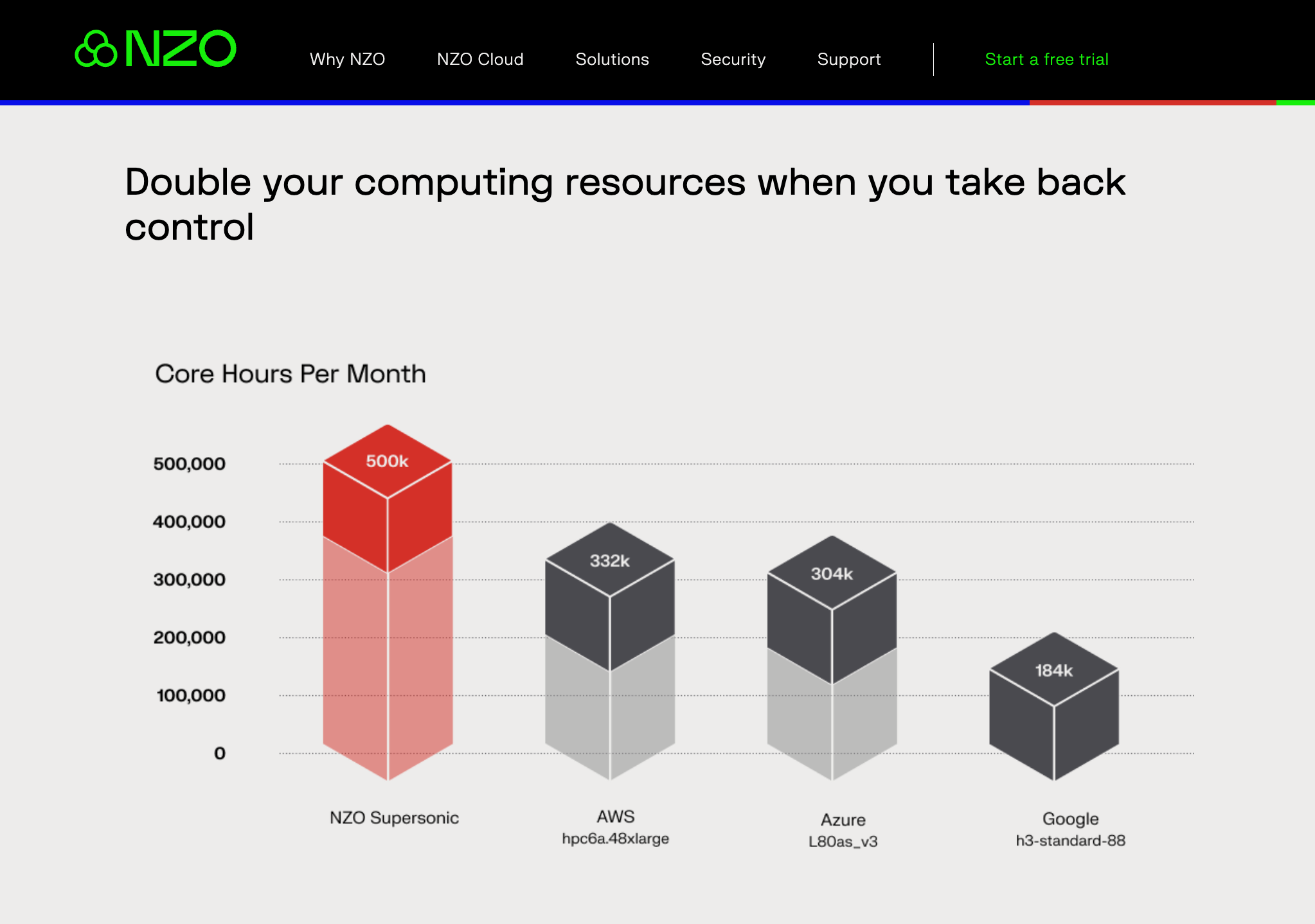Table of Contents

Businesses are increasingly relying on cloud-based servers to host their applications and store their data. Cloud computing offers numerous benefits, including scalability, flexibility, and cost-efficiency. However, it’s essential for businesses to understand the factors that influence cloud-based server costs in order to make informed decisions and optimize their expenses. In this article, we will delve into the key factors influencing cloud-based server costs, considerations when estimating these costs, and strategies to optimize and minimize expenses. Let’s explore these topics in detail below.
Factors Influencing Cloud-based Server Costs
In order to understand cloud-based server cost, businesses must consider various factors that impact these expenses. By analyzing these factors, organizations can make informed decisions about their cloud infrastructure and minimize unnecessary expenditures.
Let’s dive deeper into some of the key factors that influence cloud-based server cost:
1. Resource Usage (CPU, RAM, Storage)
The resources consumed by cloud-based servers, such as CPU, RAM, and storage, significantly impact the overall costs. The more resources a server consumes, the higher the costs will be. It’s crucial for businesses to assess their cloud resource requirements accurately to avoid overspending on unnecessary resources.
For example, the cost of cloud server for small business can be reduced if they only require a small amount of storage and processing power for their application. They can opt for a lower-tier plan that offers just the right amount of resources. This way, they can effectively manage their cloud hosting costs without compromising on performance.
2. Data Transfer and Bandwidth
Data transfer and bandwidth usage are important considerations when estimating the cost of cloud server. Some cloud service providers charge based on the amount of data transferred in and out of the server, as well as the bandwidth utilized. Organizations need to analyze their data transfer needs and select the appropriate plan to avoid unexpected expenses.
By carefully monitoring their data transfer and bandwidth usage, businesses can optimize their costs. They can implement strategies such as data compression, caching, and content delivery networks (CDNs) to reduce the amount of data transferred and minimize bandwidth usage. This not only helps in cost reduction but also improves the overall performance of their applications.
3. Geographic Location and Availability Zones
The geographic location and availability zones of cloud servers can impact costs. Cloud service providers offer different pricing tiers based on their data center locations. Choosing the right geographic region and availability zones can help businesses optimize costs, ensuring better performance and lower latency for their users.
For instance, if a business primarily serves customers in a specific region, it would be wise to select a data center located nearby. This reduces the distance data needs to travel, resulting in faster response times and improved user experience. Additionally, businesses can take advantage of multi-region availability zones to ensure high availability and disaster recovery without incurring excessive costs.
4. Service Level Agreements (SLAs) and Support Levels
Service Level Agreements (SLAs) define the quality and level of service provided by cloud service providers. Higher SLAs often come with higher costs. Businesses need to assess their service requirements and select the appropriate SLA to balance their expenses and expectations.
By understanding their business needs and the criticality of their applications, organizations can choose the right SLA that aligns with their budget and performance requirements. It’s important to strike a balance between cost and reliability to ensure that the chosen SLA meets the business’s objectives without overspending.
5. Additional Features and Add-Ons
Cloud service providers offer a wide range of additional features and add-ons, such as load balancing, data backup, and monitoring tools. While these features enhance the server’s functionality, they also add to the overall costs. Organizations should evaluate their needs carefully and opt for the necessary add-ons to avoid unnecessary expenses. By understanding the specific requirements of their applications, businesses can choose the right set of additional features and add-ons.
For example, if a business operates a high-traffic website, load balancing can help distribute the incoming traffic across multiple servers, ensuring optimal performance. However, if load balancing is not a critical requirement, businesses can save cloud computing hosting costs by opting out of this feature.
Businesses can effectively manage cloud-based server cost by considering these factors and making informed decisions. It’s essential to regularly review and optimize these expenses to ensure that the cloud infrastructure remains cost-efficient without compromising on performance and reliability.
NZO Cloud offers simple, fixed-cost subscription plans that eliminate the guesswork with budgeting for your cloud environment every month. This gives you peace of mind that your costs will always be under control and fall within your established budget.
Factors to Consider When Estimating Cloud Server Costs
Estimating cloud server cost requires careful consideration of various factors that influence the overall expenses. Businesses can accurately assess their budgetary needs and ensure cost optimization by analyzing these factors.
However, there are a few additional factors that organizations should take into account to make a well-informed decision:
- Scalability and growth projections: Scalability is one of the key advantages of cloud computing. When estimating cloud server costs, businesses should consider their growth projections and assess whether the chosen cloud provider can accommodate their future needs without excessive costs. It’s important to select a provider that offers flexible scaling options to align with the company’s growth trajectory. It’s also worth mentioning that scalability not only refers to the ability to handle increased demand but also the ability to scale down during periods of low usage. This flexibility allows businesses to optimize cloud hosting costs by paying only for the resources they need when they need them.
- Performance requirements and SLAs: Every business has unique performance requirements for their applications and services. It’s crucial for organizations to evaluate their performance needs and ensure that the selected cloud provider can deliver the required performance levels as per the agreed SLAs. Businesses should also consider the cost implications of meeting these performance standards. Additionally, it’s worth noting that some cloud providers offer performance monitoring and optimization tools that can help businesses fine-tune their applications and services for optimal performance. These tools can provide valuable insights into resource utilization, bottlenecks, and potential cost-saving opportunities.
- Data security and compliance needs: Data security and compliance are vital considerations when estimating cloud server costs. Businesses must evaluate the security measures and compliance certifications provided by the cloud service provider to ensure the safety and integrity of their data. Investing in robust security measures and regulatory compliance can add to the overall costs but is essential for safeguarding sensitive information.
How Different Regulations Impact Data Compliance
Different regulations impact data compliance in various ways, often dictating how organizations collect, store, process, and protect sensitive information. The table below provides examples of how different regulations affect data compliance:
| Regulation | How it Affects Data Compliance |
| General Data Protection Regulation (GDPR) | GDPR is a European Union regulation designed to protect the personal data and privacy of EU citizens. It applies to all organizations that process personal data of EU residents, regardless of where the organization is located. GDPR mandates strict requirements for obtaining consent, notifying data breaches, and providing individuals with rights over their data, such as the right to access, rectify, and erase personal information. |
| Health Insurance Portability and Accountability Act (HIPAA) | HIPAA is a US federal law that regulates the security and privacy of protected health information (PHI). It applies to healthcare providers, health plans, and healthcare clearinghouses, as well as their business associates. HIPAA requires safeguards to protect the confidentiality, integrity, and availability of PHI, including access controls, encryption, and audit trails. |
| California Consumer Privacy Act (CCPA) | CCPA is a state-level privacy law in California that grants consumers rights over their personal information collected by businesses. It applies to companies that meet certain criteria, including annual gross revenues exceeding $25 million, or those that handle personal data of at least 50,000 California residents. CCPA grants consumers rights to access, delete, and opt out of the sale of their personal information. |
| Payment Card Industry Data Security Standard (PCI DSS) | PCI DSS is a set of security standards established by the Payment Card Industry Security Standards Council (PCI SSC) to protect credit cardholder data. It applies to organizations that store, process, or transmit cardholder data. PCI DSS requires measures such as secure network configurations, encryption, access controls, and regular security testing to prevent data breaches and unauthorized access to cardholder information. |
| Sarbanes-Oxley Act (SOX) | SOX is a US federal law aimed at improving corporate governance and financial reporting transparency. It applies to publicly traded companies and their auditors. SOX mandates controls and procedures for accurate financial reporting, including measures to ensure the integrity and confidentiality of financial data. It also requires companies to retain electronic records and provide adequate internal controls over financial reporting. |
| Children’s Online Privacy Protection Act (COPPA) | COPPA is a US federal law that protects the online privacy of children under the age of 13. It applies to operators of websites and online services directed at children or those with actual knowledge of collecting personal information from children. COPPA requires obtaining verifiable parental consent before collecting personal information from children, as well as providing parents with the rights to review and delete their child’s information. |
It’s also important to mention that some cloud providers offer additional security features such as encryption, data backup, and disaster recovery options. These features can provide an extra layer of protection and help businesses meet their specific security and compliance requirements.
Budget Constraints and Financial Planning
Every organization operates within a given budget. When estimating cloud server costs, businesses must consider their budgetary constraints and allocate appropriate funds for cloud infrastructure. By carefully planning and aligning their financial resources, businesses can optimize their cloud expenses and avoid overspending.
It’s worth noting that some cloud providers offer cost management tools and analytics that can help businesses track and control their cloud spending. These tools can provide insights into resource utilization, cost breakdowns, and recommendations for cost optimization, allowing organizations to make informed decisions and stay within their budgetary limits.

How Businesses Can Prepare for Cloud-Based Server Costs
Now that we have identified the factors influencing a cloud-based server cost and the considerations for estimating these expenses, it’s crucial for businesses to prepare effectively. By following these steps, organizations can minimize surprises and ensure better cost management.
1. Compare Pricing Models
One important step in preparing for the cost of a cloud-based server is to compare pricing models offered by different providers. Each provider has its own pricing structure and cost plans. By conducting a thorough analysis, organizations can identify the most cost-effective options and choose a provider that aligns with their budget and requirements.
2. Estimate Operational Expenses
In addition to server costs, businesses must estimate the operational expenses associated with managing their cloud infrastructure. Operational expenses include employee salaries, training costs, and software licensing fees. By factoring in these expenses, organizations can estimate the total cost of ownership for their cloud-based servers more accurately.
3. Uncover Potentially Hidden Costs
When estimating cloud server costs, it’s essential to uncover potentially hidden costs that may arise during the implementation and usage of the servers. For example, some cloud service providers charge additional fees for certain services or impose penalties for exceeding allocated resource limits. By analyzing the terms and conditions carefully, businesses can avoid unnecessary expenses.
4. Budget for Implementation and Migration
Another aspect that businesses should consider when preparing for a cloud-based server cost budget is implementation and migration. Migrating to the cloud involves initial implementation costs, such as data migration and infrastructure setup. Businesses should allocate a portion of their budget to cover these expenses. Organizations can avoid unexpected financial burdens by properly budgeting for implementation and migration.
Furthermore, it is important for businesses to stay updated on the latest trends and advancements in cloud technology. Organizations can make informed decisions about their cloud infrastructure and take advantage of cost-saving opportunities by staying informed. Regularly reviewing and optimizing cloud resources can help businesses identify areas for improvement and reduce unnecessary expenses.
Preparing for cloud-based server costs requires careful analysis, estimation of operational expenses, uncovering hidden costs, and budgeting for implementation and migration. By following these steps and staying informed about the latest trends, businesses can effectively manage their cloud-based server costs and ensure better cost management.
Optimization Strategies for Minimizing Cloud Server Costs

To optimize cloud server costs, businesses must adopt strategies that ensure efficient resource utilization and cost minimization. By implementing the following practices, organizations can make the most of their cloud infrastructure while keeping expenses in check.
1. Right-Sizing Instances and Resources
One key strategy for minimizing cloud server costs is right-sizing instances and resources. This involves accurately assessing resource requirements to select the appropriate instance types and avoid overspending on unnecessary resources. By right-sizing, businesses can ensure efficient resource utilization and cost optimization.
2. Implementing Auto-Scaling and Load Balancing
Another effective strategy is implementing auto-scaling and load balancing. Auto-scaling allows businesses to dynamically adjust resources based on demand. This means scaling resources up or down automatically, depending on the workload, which helps reduce unnecessary costs. Load balancing is another crucial component of this strategy, as it evenly distributes incoming traffic across multiple instances. This ensures efficient resource utilization and maximizes performance.
3. Utilizing Reserved Instances and Savings Plans
In addition to these strategies, utilizing reserved instances and savings plans can lead to significant cost savings. Cloud service providers offer reserved instances and savings plans that allow businesses to commit to using specific resources over a longer period. By taking advantage of these options, organizations can benefit from reduced costs compared to on-demand instances. This approach is particularly useful for applications with predictable workloads.
4. Monitoring and Optimization Tools
In addition to managing costs, optimizing performance is equally important for maximizing the value of cloud server investments.
Performance monitoring and optimization strategies focus on enhancing the efficiency, reliability, and responsiveness of cloud-based applications and services. This involves monitoring key performance indicators (KPIs), such as response times, throughput, and error rates, to identify performance bottlenecks and areas for improvement. By leveraging performance monitoring tools and techniques, businesses can pinpoint inefficiencies, optimize configurations, and fine-tune resource allocation to achieve optimal performance levels while minimizing costs.
Adopting performance optimization best practices, such as:
- Caching
- Code optimization
- Database tuning
Can further enhance application performance and reduce resource consumption. By integrating performance monitoring and optimization into their overall cloud management strategy, businesses can achieve the dual objectives of cost efficiency and high performance, maximizing the value of their cloud server investments.
5. Regular Cost Reviews and Adjustments
Continuous monitoring and regular cost reviews are essential components of effective cost optimization strategies for cloud servers. By regularly reviewing usage patterns, performance metrics, and cost data, businesses can identify opportunities for further optimization and cost reduction. These reviews should involve analyzing resource utilization, identifying idle or underutilized resources, and assessing the effectiveness of cost optimization measures implemented. Based on these findings, organizations can make necessary adjustments to their cloud infrastructure, such as resizing instances, modifying auto-scaling configurations, or adjusting reserved instance coverage.
Additionally, staying informed about changes in pricing models, discounts, and new services offered by cloud providers is crucial for optimizing costs effectively. By maintaining proactive oversight and making continuous adjustments, businesses can ensure that their cloud server costs remain optimized and aligned with their evolving needs and budgetary constraints.
How NZO Cloud Helps You Budget for the Cloud

Budgeting for cloud services can be a daunting task, with costs fluctuating based on usage, demand, and various other factors. However, NZO Cloud offers a range of features and tools designed to help businesses effectively manage their cloud budgets and optimize spending. Here’s how NZO Cloud can assist you in budgeting for the cloud:
| NZO Cloud Budgeting Features & Tools | Description |
| Cost estimation and planning | NZO Cloud provides comprehensive cost estimation and planning tools that enable businesses to forecast their cloud expenses accurately. By inputting usage data and projected workloads, users can generate detailed cost projections, allowing them to plan and allocate budgets more effectively. Then, you can simply choose which plan works the best for your business, either Sonic (best for smaller teams), Supersonic (best for organizations needing more AI-enabled HPC cloud resources), or Hypersonic (best for enterprise organizations). |
| Usage analytics and optimization | NZO Cloud offers robust usage analytics and optimization tools that help businesses identify inefficiencies and cost-saving opportunities within their cloud infrastructure. By analyzing usage patterns and resource utilization, users can pinpoint areas for optimization and implement strategies to reduce unnecessary spending. |
| Custom-configured cloud resources | While most cloud providers expect you to mold your business operations to work inside their framework, NZO Cloud allows you to customize your cloud resources so that you’re getting exactly what you need to support your operations. |
| Access to onboarding and security engineering teams | To ensure that your cloud production environment implementation is successful and efficient, NZO Cloud provides users with effective onboarding and security teams to help them create a suitable cloud environment that is secure and turn-key. |
Conclusion
Navigating the realm of cloud-based server costs requires a thorough understanding of the factors at play, careful consideration of various elements, and proactive optimization strategies. Businesses must analyze resource usage, data transfer needs, geographic locations, service level agreements, and additional features to accurately estimate and manage their cloud expenses. Moreover, preparing for cloud-based server cost budgeting involves comparing pricing models, estimating operational expenses, uncovering hidden costs, and budgeting for implementation and migration.
To effectively optimize cloud server costs, businesses can adopt strategies such as:
- Right-sizing instances
- Implementing auto-scaling and load-balancing
- Utilizing reserved instances and savings plans
- Leveraging monitoring and optimization tools
Regular cost reviews and adjustments are also essential for ensuring ongoing optimization and alignment with evolving needs and budgetary constraints.
With the assistance of cloud management platforms like NZO Cloud, businesses can streamline the budgeting process, gain insights into usage analytics, optimize resource allocation, and access customized cloud resources. Additionally, the availability of onboarding and security engineering teams further facilitates the seamless integration of cloud infrastructure into business operations, ensuring efficiency, reliability, and security.
By employing these strategies and leveraging advanced cloud management solutions, businesses can effectively navigate the complexities of cloud-based server cost planning, optimize their cloud infrastructure, and maximize the value of their investments in the cloud. Ultimately, a proactive and informed approach to managing cloud expenses is essential for driving business success in the digital age.
Discover how NZO Cloud can help you save on cloud-based server cost with comprehensive price plans and tools by starting a free trial.




